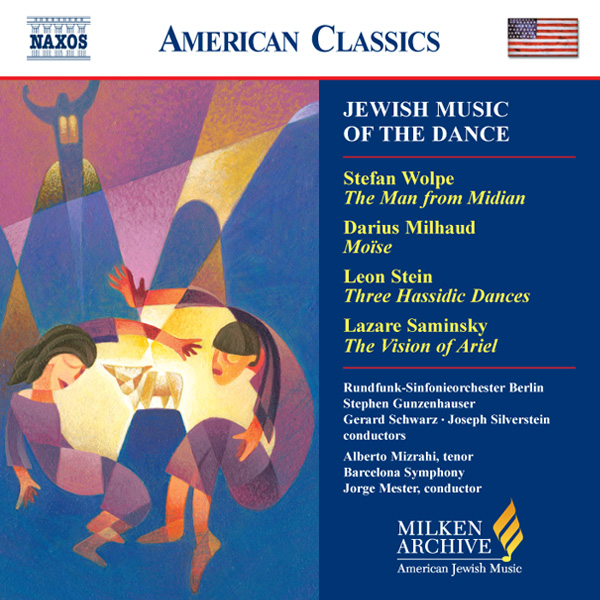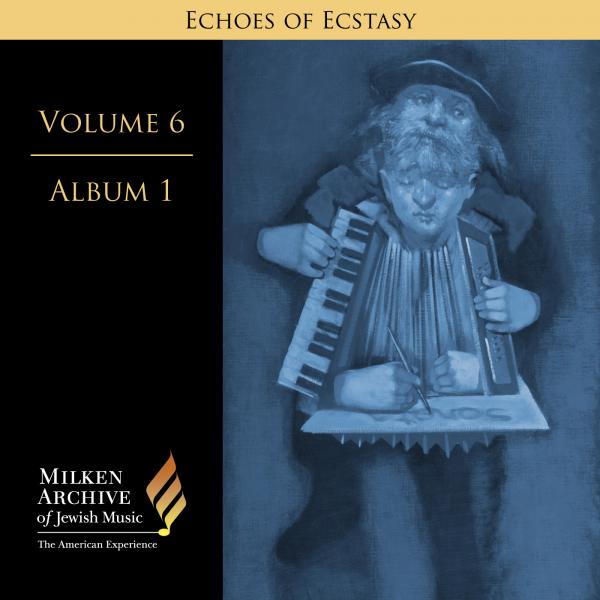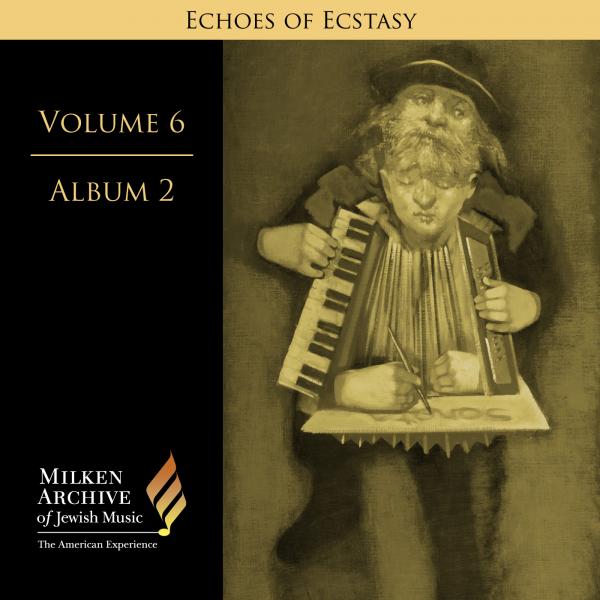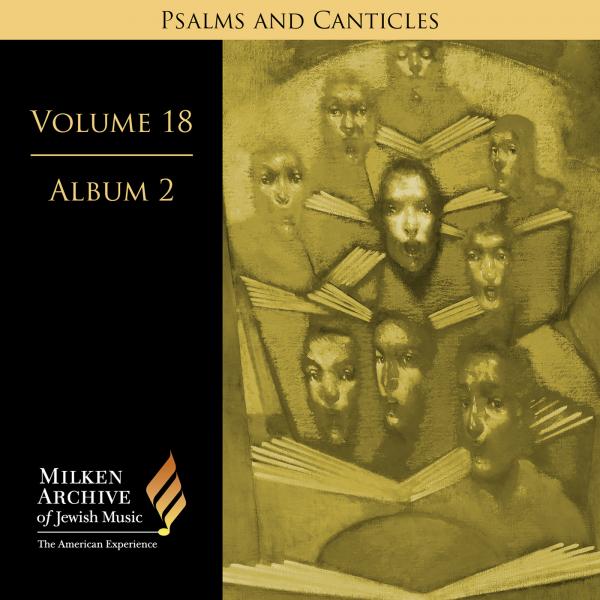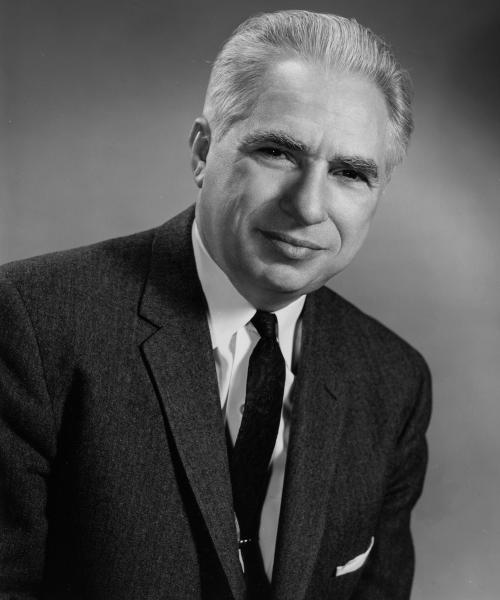
For nearly a half century Leon Stein was an esteemed figure in the musical life of his native Chicago, enriching the community’s cultural vibrancy as a composer, conductor, teacher, author, champion of humanitarian causes, and devoted friend to many young and up-and-coming musicians. His was a career and a steady contribution in which both the Jewish and the general musical spheres of the city took great pride.
Stein’s parents had immigrated to Chicago in 1903 from Bratslav, in the Ukraine. That year saw a marked upsurge in immigration from the Czarist Empire, fueled in part by the infamous Kishinev pogrom (in Bessarabia) and its aftermath. His father, a tailor and furrier by trade, was also an amateur singer who sang on occasion in synagogue choirs. The young Stein, too, sang sporadically as a boy chorister in local synagogues. That experience surfaced later in his academic Jewish musical interests as well as in many of his Judaically related compositions. Though his family, which followed mainstream observances and celebrations of Jewish life, was not orthodox in orientation, Stein later recalled the positive and permanent emotional imprint of the ethnically as well as religiously Jewish “feel” of their neighborhood, which always remained a part of his identity and consciousness as a creative artist.
Stein’s principal musical activity in his youth centered around the violin, and he studied that instrument and music in general at the city’s American Conservatory of Music. After high school, by which time he had become interested in composition, he attended Crane Junior College, where one of his teachers was Robert Gomer Jones—a graduate of London’s Royal College of Music, an accomplished organist, and the director of Chicago’s Welsh Male Choir. Following a year during which Stein devoted himself to self-study in composition, he was given a scholarship at DePaul University, where he received his bachelor’s degree in only a year and, upon graduation, was awarded first prize in composition for his Suite for String Quartet. He was immediately engaged as an instructor on the faculty of DePaul’s School of Music. Until his retirement, he remained there without interruption for forty-seven years, rising to the rank of full professor, then serving as chairman of the department of theory and composition, and ultimately becoming the dean. He also earned his master’s and Ph.D. degrees from DePaul. In addition to those formal studies, during the 1930s he continued studying composition privately with Leo Sowerby and conducting with Frederick Stock. During the Second World War he served as a petty officer in the United States Navy, and he composed and arranged music for its regularly and internationally broadcast radio programs Meet Your Navy and On the Target. In that capacity he also directed the concert band at the Great Lakes Training Station.
One of Stein’s most memorable achievements was his tenure as the conductor of the amateur Community Symphony Orchestra. It was one of several similar local amateur orchestras, composed of businessmen, doctors, lawyers, tradesmen, teachers, and other nonprofessional musicians who enjoyed weekly opportunities to play much of the standard symphonic repertoire as an avocation. Most major and many medium-sized American cities could boast of at least one such amateur orchestra in those days, but this particular one in Chicago had an additional mission. It was founded specifically to create the first interracial local orchestra. It was an effort to offer theretofore unavailable opportunities to “nonwhite”—viz., mostly black at that time—amateur classical musicians in an era when it was usually, but erroneously and sometimes conveniently, assumed that there were none.
Under Stein, the Community Symphony Orchestra served another important role by sponsoring annual auditions to give high school (and sometimes younger) music students opportunities to make solo concerto appearances at its concerts. Later, he conducted other amateur ensembles as well as the professional City Symphony Orchestra, sponsored by the local union, the Chicago Federation of Musicians.
Stein’s catalogue contains more than one hundred published works, ranging from his five string quartets (all recorded by the Chicago Symphony Orchestra String Quartet) and much other solo and chamber music—including seven pieces for saxophone and various ensembles, which are among his most frequently performed works—to four symphonies and many other orchestral works; concertos for violin, cello, and oboe; a Rhapsody for flute, harp, and string orchestra (notable for its nine-part division of the strings); liturgical as well as secular choral settings; two one-act operas; and two ballet scores.
Stein refused to align himself with any particular musical movement in vogue at any one time, and he preferred to steer a “middle ground” between conservatism and progressive invention. “The term ‘pantonality’ best defines my musical language,” he explained in an interview, and he expanded upon how it applies to his music:
This is an inclusive idiom that combines 20th-century treatments of modality, tonality, synthetic scales, and post-serial dodecaphony; uses a harmonic-contrapuntal chordal structure of seconds and fourths as well as triads; and is indebted to this century’s emancipation of the dissonance and liberation of rhythm….My music is generally linear, notated traditionally for traditional (acoustic) instruments, and uses forms ranging from established patterns to a free continuum of motion, density, tension, and color.
Stein was also a keen thinker about the nature of music in relation to aesthetics in general and with regard to its communicative priorities, as he outlined in 1963 as his “composer’s credo”:
I believe the most important function of music is meaningful communication. Musical composition is the transmutation of experience, in its broadest sense, into auditory patterns. The content of music, however, is neither emotion nor experience, but the aesthetic equivalent of both, achieved through its transmutation. A composer is, therefore, an individual who thinks creatively in terms of sonic symbols.… A musical composition as a work of art is a revelation of a reality beyond direct experience…the composer is simply the medium through which the idea is given embodiment in palpable form.
For a few years during his early university days Stein directed the youth and children’s choruses at Camp Kinderland near South Haven, Michigan, the children’s summer camp of the Chicago branch of the cultural Yiddishist and labor- and socialist-leaning fraternal order known as the Arbeter Ring—the Workmen’s Circle. There, he prepared the children for biweekly presentations of song and dance, and he taught them Yiddish songs. Much of that repertoire was new to him, and those summers broadened his own Jewish horizons. He also directed Workmen’s Circle youth choruses in town for a while, but he never became actively involved with the organization or its perspectives. Rather, he began to engage in his own research into synagogue music and the varieties of Jewish sacred musical development. Over the years he wrote a number of articles on Jewish musical subjects, ranging from contemporary assessments to the work of the late-Renaissance/early-Baroque Italian Jewish composer Salamone Rossi, and from a summary examination of Hassidic music to deliberations on the work and outlook of Ernest Bloch. Stein developed a particular interest in the musical and emotional dimensions of Hassidic life, lore, and practice, and his article on that subject constituted an important contribution to its appreciation by the layman. He also turned to the melos of Hassidic song, prayer, and dance as a source for a number of his compositions.
In 1950 Stein’s doctoral dissertation was published as a book, The Racial Thinking of Richard Wagner, a subject he addressed in journal articles and frequent lectures. He also directed local synagogue choirs for a number of years, and he served twice as consultant to the Rubin Academy of Music in Jerusalem.
Among Stein’s works, quite a few pieces have Jewish themes or are related to Judaic or Jewish historical and literary perspectives. Apart from his those presented here are Aria Hébraïque, the slow movement of his oboe concerto, which is also arranged for other instrumental combinations; The Lord Reigneth (Psalm 97), a cantata for women’s chorus, tenor solo, and orchestra; Kaddish, for cantorial tenor solo and strings; Invocation and Dance, for violin and piano; Dance Ebraico, for cello and piano; several synagogue choral settings; Songs of the Night, on poems by Ḥayyim Naḥman Bialik; and Exodus, a ballet. One of his most arresting Jewish-related orchestral works is Then Shall the Dust Return (a title taken from Ecclesiastes), inspired by the story of Janusz Korczak [Henryk Goldszmidt]. Korczak was a pediatrician who ran an orphanage in the Warsaw Ghetto, and despite offers of rescue for himself, he refused to abandon the 200 children in his care. Instead he accompanied them to the Treblinka death camp, where he was murdered in 1942, as he knew he would be, along with all the children.
In a series of “Reflections” for an issue of the College Music Symposium, Stein proposed that “originality is not so much newness as genuineness.” Indeed, it is a spirit of “genuineness”—of straightforward, direct communication without a trace of artificiality or pompous display for its own sake—that permeates Stein’s music, whatever its form and whatever its particular style in any one piece.
By: Neil W. Levin
